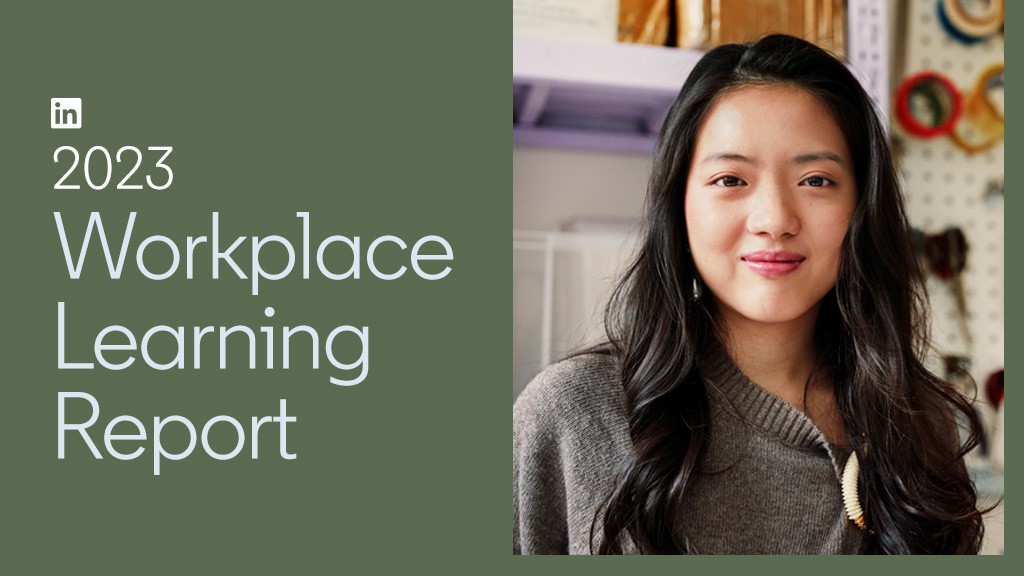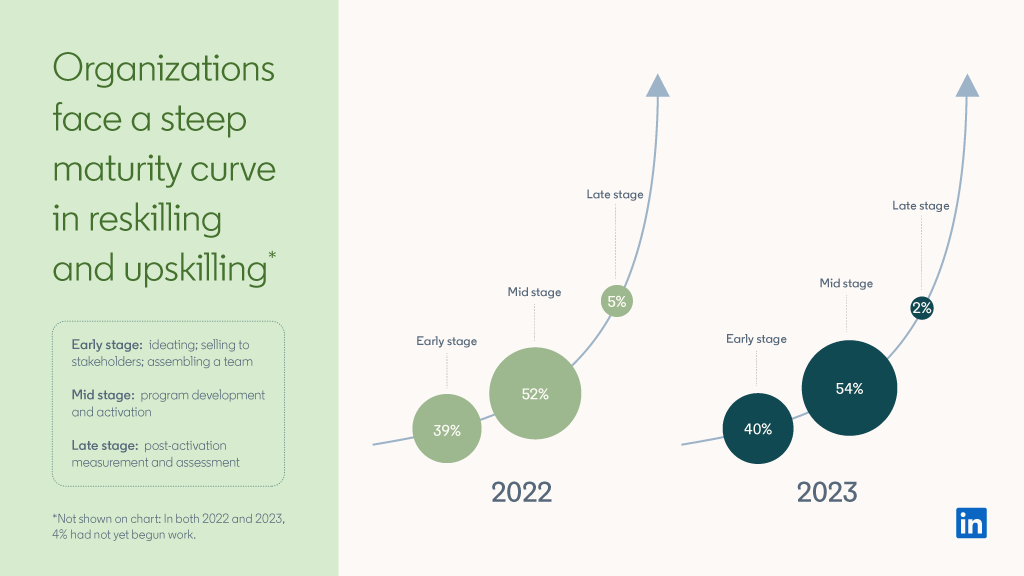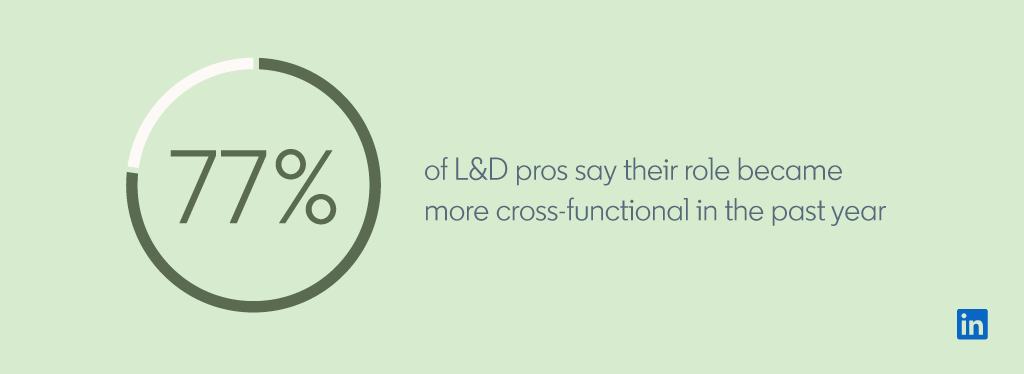
The overwhelming takeaway from these past few years is clear — we need to empower people by providing them with durable, relevant skills that can stand up to any changes in the market.
When we do that, we also build a resilient workforce and strengthen the muscles for organizations to innovate and grow.
That’s why I’m delighted to share the LinkedIn 2023 Workplace Learning Report: Building the Agile Future. Consider this your road map to thriving amid uncertainty. You’ll find insights from a global survey of more than 1,500 learning and development (L&D) pros and 700 learners, plus LinkedIn platform data and advice from expert practitioners.
The report shines a light on three key takeaways:
- L&D pros have more C-suite access and influence than ever before.
- Large-scale upskilling and reskilling initiatives need a serious kickstart, and career-focused learning can help.
- More than three-quarters of L&D pros say they’re collaborating more closely with other HR teams.
Here’s more detail on the most compelling headlines and data points. You can also read the full report here.
Learning pros are poised to lead through the current uncertainty
Learning pros are perfectly placed to help their organizations manage global disruption, skills shortages, and economic turbulence. Their influence in the C-suite continues to rise, and executives seem newly aware of the competitive advantage that comes with an engaged, adaptable, and growth-minded workforce.

Behind L&D’s growing influence is a compelling truth: The skills needed for any given job are changing more rapidly than ever before. LinkedIn data shows that since 2015, skill sets for jobs have changed by around 25%. By 2027, this number is expected to double. And 89% of L&D pros agree that proactively building skills will help their organizations navigate the future of work.
LinkedIn data also reveals the skills companies need most right now, including a number of human skills — management, communication, leadership, and teamwork — that are the hallmarks of an agile organization.
Fortunately, learning leaders have been honing these skills ourselves, and we’re also making the most of our voices to ensure that people strategy and business strategy are one and the same.
That’s why L&D pros say their top four focus areas for 2023 are:
- Aligning learning programs to business goals
- Upskilling employees
- Creating a culture of learning
- Improving employee retention

It’s time to accelerate upskilling and reskilling
While the urgent need to build relevant skills has never been clearer, the report also highlights a challenge: large-scale upskilling and reskilling initiatives are moving at a snail’s pace.
Forty percent of companies are still in the early stages of upskilling/reskilling (selling their program to stakeholders and forming their teams); 54% are at the midstage (developing and activating programs); and only 2% say they’ve completed a program. Four percent haven’t started at all.

And the report shares an important insight: While large-scale skill-building programs often take a long time and require a sizable investment, organizations can also leverage career-focused learning at the individual level to accelerate their upskilling initiatives. This streamlined approach harnesses the desire of individual employees for professional growth.

A learning culture that is career-focused starts with defining and celebrating all kinds of professional transformations beyond promotion. Transformations can be big or small. Learning a new skill and taking on a new cross-functional project are examples of positive growth that merit recognition from colleagues and managers.
Jane Oates, president of WorkingNation and a former official with the U.S. Department of Labor, has a related idea that she shared in an interview for the report. The concept of a career ladder, she says, is outmoded and should be replaced by the image of a career lattice. (Picture a garden trellis made of crossed strips of wood where a vine can grow in many directions.)
“As the economy changes, HR has to help get people on pathways to different jobs,” Jane says. “If there isn’t mobility in a certain part of an industry, employees can explore different functions, find overlap with their current skill set, and then add, tack, or stack on new learning and skills.”
HR collaboration helps learning pros succeed
Giving employees tools to support their career development and offering them paths to internal mobility builds employee engagement and expands workforce skills.
But fully activating a “career lattice” culture is a bigger challenge than any single department can handle. Every team within HR needs to become more collaborative and mindful of the full employee experience.
Fortunately, this shift is underway, and L&D is at the forefront.

L&D pros are building stronger relationships with their counterparts in talent management, talent acquisition, employee engagement, and diversity, equity, and inclusion, as well as other business department heads.
For companies intent on sparking more internal mobility, L&D’s partnership with talent acquisition can be especially productive. Dividing the work can be tricky, so here’s a framework:
Talent acquisition develops the culture and process for internal hiring, highlighting the richness of existing talent.
Learning and development provides skill-building paths and resources aligned to business needs and employee career goals.
Final thoughts: Read the full report for more insights
If you work in HR, you’ve seen and felt the reality of constant change. And by rising to the occasion over the last couple of years, you’ve also likely achieved more strategic importance and influence.
_________
Source > LinkiedIn 2023 Workplace Learning Report.





